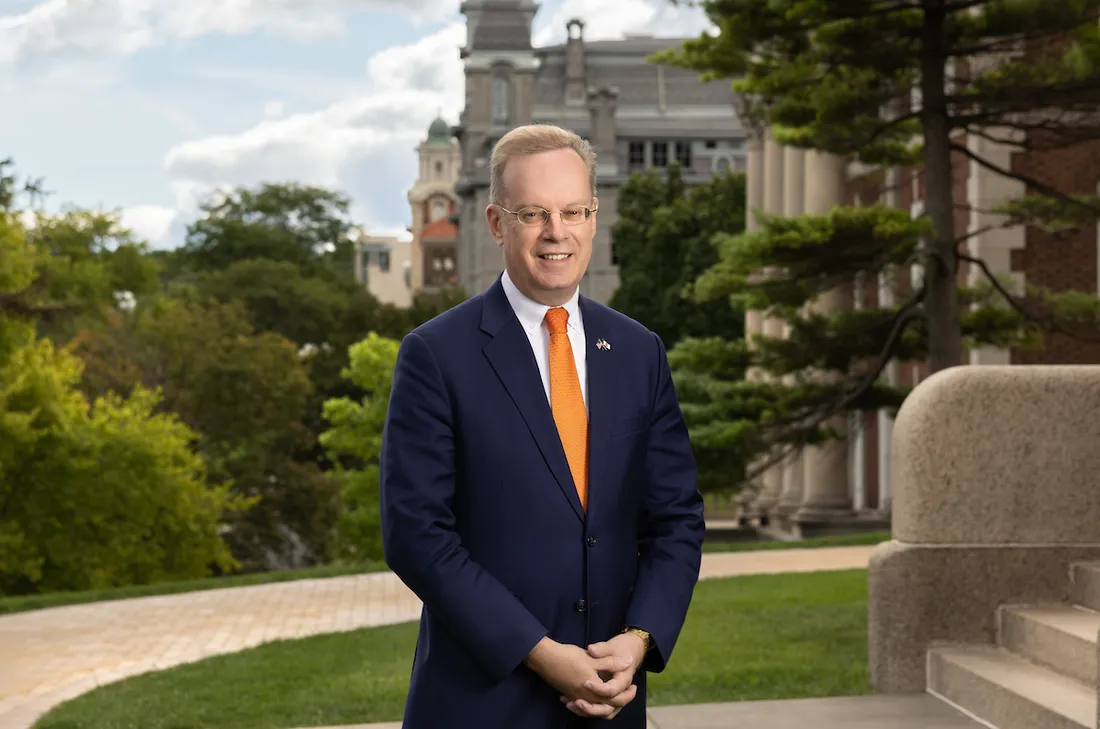A Past of Always Moving Forward
From being the nation’s first institution to offer a bachelor of the fine arts degree to founding one of the nation's first iSchool's, at Syracuse University, we’ve always had a legacy of firsts. We opened doors for women in 1870, welcoming leaders like Karen DeCrow, an icon in the women’s rights movement, and Eileen Collins, the first female commander of a Space Shuttle. We played a role in the first G.I. Bill and continue to be recognized today as one of the best private schools for military service members, veterans and their families—a commitment that is shown through our National Veterans Resource Center (NVRC). In 1890, a committee was formed and discovered that no other college or university had claimed their singular color orange. That's when we adopted orange as our official color. These are just a few fearless firsts from our first 150 years, and we believe there’s even more to come.
Today, as in our past, Syracuse University is where game changers connect education and action to go beyond what’s possible. As an inclusive, student-focused research university we prepare scholars, innovators and leaders to not just engage in an ever-evolving world—but to shape it.
University Archives
The University Archives is dedicated to collecting, preserving, and providing access to records that document the history of Syracuse University from its founding in 1870 to the present.
Discover University ArchivesFounding
Since our founding, we’ve been an inclusive and welcoming place. At the 1870 inauguration of Syracuse University, Dr. Jesse Truesdell Peck (a founder and first chair of the Board of Trustees) charged the faculty to remember that "the conditions of admission shall be equal to all persons ... there shall be no invidious discrimination here against women or persons of any nation or color... brains and heart shall have a fair chance ...…” And to this day, we carry that forward to further a future that respects and reflects the contributions of all.
Land Acknowledgment
Since his inauguration in April 2014, Chancellor Kent Syverud has initiated several measures that honor the Haudenosaunee. Among them is the University’s policy of opening public events with an acknowledgement of the Onondaga Nation. The land acknowledgement is to be used to open university-wide, public events hosted by Syracuse University to acknowledge our deep connection and respect for the Haudenosaunee people.
“I acknowledge with respect the Onondaga Nation, firekeepers of the Haudenosaunee, the Indigenous people on whose ancestral lands Syracuse University now stands.”
Commencement Speakers
Syracuse University’s Commencement is an annual milestone that marks a profound rite of passage in our students’ lives and honors their achievements. The Syracuse University Commencement speaker is chosen through a selection process that starts more than a year in advance, when students, staff, faculty, alumni and others in the community offer suggestions. You can view a full list of previous Commencement speakers here.
We have the capacity, we have the opportunity, to be the best in the world at providing opportunity and empowerment to the veterans of our armed forces and their families.

More About Our History and Leadership
Chancellor Kent Syverud
Kent Syverud is Chancellor and President of Syracuse University. Appointed by the University’s Board of Trustees in September 2013, he assumed the leadership post in January 2014, becoming the 12th leader of the University since its founding in 1870.
Board of Trustees
The Board of Trustees is the governing body of Syracuse University, responsible for the institution’s educational mission and fiscal policies.

